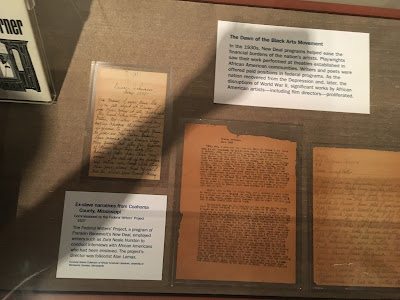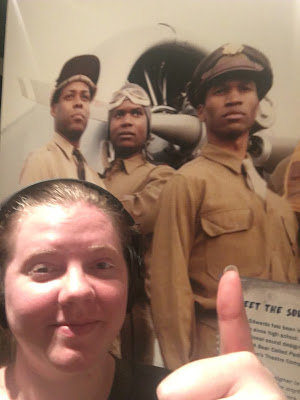For a heavy taste of poignant melancholy, check out the Guthrie's mainstage adaptation of Toni Morrison's The Bluest Eye
 |
| Photo by Dan Norman. |
Have you ever seen something that made the pit of your stomach drop out of your body? Something that physically reached into your chest and pulled out your literal heartstrings?
The Bluest Eye, the Guthrie's lyrical adaptation of Toni Morrison's brilliant first novel, is just such a show. It is so hard to watch, but so vital, so new, and so necessary, that you can't avert your eyes for even a second. It's a 105-minute-long, extravagantly posed snapshot of lives that seem sprung straight off of the page, and it's eerie, troubling themes will have you riveted for the full performance.
 |
| Photo by Dan Norman. |
The Bluest Eye tells the story of Pecola, an abused 12 year old girl, through the eyes of her two friends Frieda and Claudia. Pecola's life story is a testament to the domestic terrorism faced by black women every day, both from their own families and societies at large. Despite her innumerable hardships (which includes abusive parents, a rape and unwanted pregnancy and miscarriage, homelessness, and relentless teasing and gossiping from her community at large), Pecola manages to keep her spirits lifted because of one big wish: a pair of big blue eyes, which would make her more Caucasian in appearance and, to her mind, more lovable by those who can't love her as she already is. Pecola's thorough desire to be something she is not, her total inability to accept and love herself as she is, is one of the most heartbreaking stories I've ever seen on stage. There are a million small details about Pecola's life, her friendships along the way, her family's backstory and the way she gets her blue eyes that I will leave for you to savor when you see this live, but suffice it to say: they are all wrenching, they are all understandable, and they will break your heart.
 |
| Photo by Dan Norman. |
This wonderful cast is perfectly poised to tell Pecola's story, with a winsomeness and ferocity that such a serious narrative deserves. Brittany Bellizeare is magnificent as Pecola, truly disappearing into her role and drawing the audience in. Bellizeare profoundly captures Pecola's childish nature - despite everything, she IS a child after all - as well as Pecola's sudden descent into madness at the end of the show in a final scene that will give you quite literal chills. Carla Duren and Deonna Bouye are wonderful as narrators Claudia and Frieda, respectively. They equally capture the innocence of their characters' childish understanding of Pecola's very adult problems, and they narrate the story with a lilting, lyrical delivery that carries the audience like a speeding brook through the story. Their performances are fresh and fruitful, and I hope to see more of them in the Twin Cities.
 |
| Photo by Dan Norman. |
The supporting cast also ushers the show to success. Stephanie Berry perfectly captures the despair of Pecola's mother, Mrs. Breedlove; J. Bernard Calloway is equally despicable and heartbreaking as Pecola's father Cholly; and Caroline Strang is perfectly despicable as the high yellow Maureen Pearl, the foe of all the local black girls. Guthrie veterans Shawn Hamilton and Regina Marie Williams round out the cast as Frieda and Claudia's parents, and they lend a grounding aspect to the story and stage that keeps the fantastic ending from seeming too foreign.
 |
| Photo by Dan Norman. |
Matt Saunders provides a fresh, clean setting for the scenic design, which is composed mainly of a cement wall cleverly scattered with interspersed dandelions, and surrounded by a beautiful impression of a field. It manages to be lush and stark all at the same time, and it's a perfect backdrop for the serious story. Small details like unspooling a simple clothesline in the summer sun or a waft of smoke from a coal stove are illuminated with painterly washes from lighting designer Yi Zhao, who puts the simple settings into fantasy territory. Costumes, by Montana Blanco, are pretty simple but pack a big punch, allowing the audience to fully focus on each person directly as their narrative takes flight. Again, attention to detail is key, such as the soft stain of a spilled blueberry pie, or the removal of Pecola's baby from an unbuttoned hole in her dress that can't help but evoke her ripped, broken womb.
 |
| Photo by Dan Norman. |
The Bluest Eye is not only a unique, affecting story, but one of the most perfectly drawn adaptations of a book that I've seen. The plot is tightly constructed and never loses any of Toni Morrison's brilliant lyricism, even throughout the darkest scenes. It is clear that this cast takes great care with this story, and their deep reverence for Morrison's work and determination to make this a fully rounded performance really shows. The Bluest Eye is one of those rare stories that both illuminates the destruction a community can cause to itself, and lifts the veil on the reason such a community might be so fatally damaged in the first place. It places an unflinching gaze on the terrorism of white supremacy and the ways that children can be abused into believing that the horrors of the world can be solved with simple things such as acquiring a pair of blue eyes. The Bluest Eye is a revealing, uncomfortable, fraught piece - don't expect to leave smiling - but it's one that audiences desperately need to hear and a lovely introduction to Toni Morrison's work if you're not already familiar.
The Bluest Eye may not be the story that America wants to hear, but it's one that we richly deserve after the sins of our fathers - which are quickly becoming our own. The Bluest Eye runs at the Wurtele Thrust Stage through May 21. For more information or to buy tickets, click on this link.





































